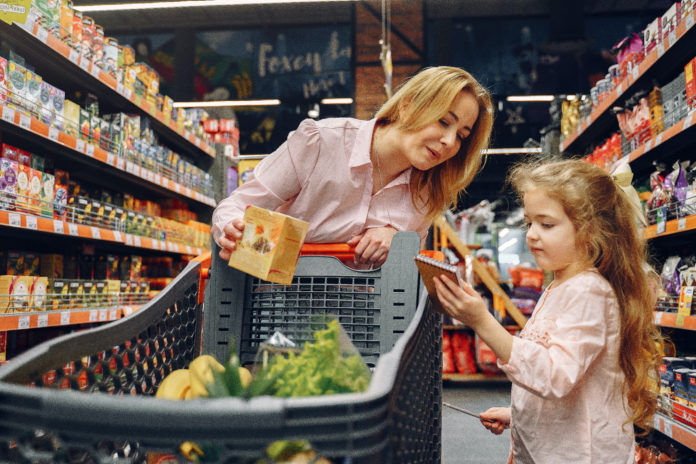
Cost is top of mind for today’s consumers, according to a new report from Vericast. More than 60% of consumers say rising prices is a top challenge, with 42% struggling to afford essential items and nearly two-thirds feeling more anxious about inflation increases.
Increasing costs are making customer acquisition, one of the top challenges for CPG brands, even more difficult. Vericast’s survey of nearly 2,000 U.S. consumers and more than 300 CPG and grocery industry professionals reveals how four key consumer groups are dealing with the pinch of price increases and how brands can better connect with each group.
Baby boomers swapping products, seeking coupons
When shopping for food and other essentials, 83% of baby boomers cite price increases as their greatest challenge. Baby boomers are also more likely to switch products when their preferred options aren’t available (36% compared to 30% for consumers overall).
To stretch their dollar, 20% of baby boomers are searching for more coupons, both online and in print. Though they’re becoming more comfortable with ecommerce, mail or newspaper coupons are what convinces 43% to shop at a new store or try a new product. Coupons are highly motivating for consumers as a whole — “Our report found that 88% of shoppers say a coupon would motivate them to try a new brand or store,” said Aimee Englert, Executive Director, Client Strategy at Vericast.
Though brands and retailers believe social media is more effective (63%) than print media (19%), baby boomers are the least likely to be influenced by social media (6%). Fortunately for this audience, most brands aren’t cutting back spending on print media, and 62% plan to spend the same amount or more on print coupons this year.
Millennial parents squeezing convenience into their budget
More than half (53%) of millennial parents are finding it difficult to afford essential products, and 26% are trading down to less expensive products. “We recommend brands continue to advertise to stay top of mind and disrupt the trade-down mindset,” Englert said, also noting that brands should highlight their differentiators or product improvements.
More than other groups, millennial parents show a strong preference for convenience — 46% are willing to pay extra for subscription services to make their lives easier. “Messaging around recipes and meal solutions can help link a brand to this convenience need and capitalize on the trend toward at home meals,” Englert said.
Millennial parents are almost equally influenced by mail or newspaper coupons (26%), online coupons or discounts (25%), and social media ads (25%). But they are more likely than consumers overall to expect personalized promotions (58% compared to 46%).
Affluent consumers are stocking up, finding ways to save
The shopping habits of higher-income households are changing just as much as other groups. They’re looking for more value while reducing their spending, with 57% citing price hikes as their biggest challenge.
Some of the ways affluent consumers are managing rising costs include stocking up on products (42%), buying more products online (39%), and turning to cashback rebates or apps (23%).
More than a third (36%) of brands say email is their most effective tool for reaching affluent consumers, but improving the online shopping experience will also help attract this group. “Food and beverage brands should look to uplevel their online strategy by leveraging digital coupons, influencer programs, and social media for a cohesive and engaging digital experience,” said Englert. “However, in tandem with this, in-store strategies should remain strong.”
Gen Z seeking value alignment, digital solutions
Out of all the groups, Gen Z shoppers are the least concerned about rising prices. But they are most likely to take social, environmental, and political values into consideration when shopping for food products (21%). In response to this, Englert advised brands to emphasize their values in their messaging, particularly in social media advertising.
Gen Z is also more likely to shop with their phones in hand. They have been shopping on their phones more (28%) and buying products through social media sites (19%). When shopping in-store, 50% use their phones to check product reviews. “Consumers are looking at all possible channels to maximize not only their in-store experience, but pre-store and post-store as well,” Englert said. “Ensuring brand messaging and discounts are aligned across platforms will ensure the experience remains quality and consistent.”
Social media advertising is most effective for this generation, and they’re also influenced by ads in online videos (19%) and online radio/music services (14%). Recipes that include product purchasing links would be another great way to reach this generation — 55% of Gen Z consumers would like to see this feature on the recipes they find online.
Vericast’s research found that 17% of consumers overall use recipes to plan their shopping trips. “To cater to this shopping style, brands should offer targeted discounts through recipe links or influencer reviews,” Englert said. “Social media channels like TikTok offer a great opportunity to engage with customers before they even begin to plan their meals.”
Brands are switching up their marketing strategies
To adapt to shifting consumer behaviors, CPG brands are changing how they market to them, with much of the spotlight on sustainability. More than four in ten (41%) brands and retailers say that consumer focus on sustainability impacts how they market their products, and 55% anticipate that sustainability will have the most impact on how they market to them over the next few years.
Streaming tv shows and movies (48%) will be another big influencer of how brands and retailers market in the near future. Meanwhile, advertisers predict that social and political beliefs (48%) and the influencer and creator economy (45%) will soon impact the industry and marketing strategies.
Another major focus will be consumer privacy. “While there is no such thing as ‘future-proofing’ privacy targeting,” Englert said, “solution providers must embrace and adapt to evolving privacy principles through continuous investment in advancing their technologies.”








